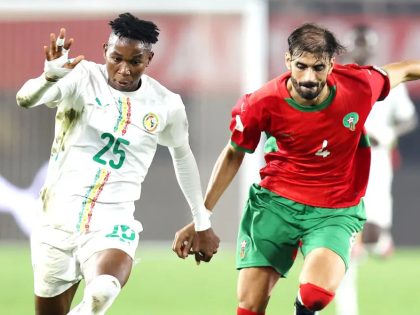In Front of Our Very Own Eyes
"Miners Shot Down," by director Rehad Desai, is a haunting and emotional documentary of the Marikana massacre in August 2012.

Photo: Greg Marinovich
When Mzoxolo Magidiwana, a miner from Marikana in South Africa’s Northwest Province, traces his family lineage of miners at Lonmin Mines, he invokes in me memories of how I narrowly escaped becoming a miner, breaking the lineage from my father. I spent my early twenties in Sasolburg, a small coal-mining town in the Northern Free State, where the air is murky, the soil is black and the smell of chemicals hangs in the air. The dust from the coal and the firms coats everything and deposits itself underneath fingernails. From the mine compound, where my father stayed, the Sasolburg town hid behind a mountain of coal and coal processing machinery. The road to the town is squeezed between a mountain of coal and firms that process the coal to make candles, oil, and other things.
When the Marikana strike began in 2012 and ultimately culminating into the events of 16 August 2012, my father and other miners in Sasolburg were not merely empathizing with the miners there but they were and still are in the same shoes. They drill coal in the depths of the earth to only emerge hours later, unrecognizable from the dust of coal, to earn peanuts.
Miners Shot Down, the haunting documentary about the Marikana Massacre, has a horrifying stillness in its shots, the melancholic music seeps in and out of the narrative and it is because of these elements that it arrives at the viewer unhurried and sinks in. It shows police stalking the miners, trapping them in with barbed wire, provoking them with teargas and then gunning them down in cold blood.
“One thing was clear, I was dying but I was dying for nothing. I hadn’t even said goodbye to my family,” says Mzoxolo Magidiwana, strike leader at Marikana.
Overlaid over his interview is harrowing footage of him lying on the ground with his face down, on the threshold of death, after being gunned down by police. In the footage, he lifts his head up and stares at the heavily armed police officer that stands before him, not offering a hand to help him or the other men who were also gunned down. Another man in a red t-shirt, with a bloody mouth is violently turned over by police officers searching him. Minutes later his big body, riddled with bullets, wobbles, struggling to sit, life escaping him.
The fusillade from heavily armed police came to a halt when one policeman shouted, “Cease fire. Cease Fire. Cease Fire.” A voice of a policeman could be heard off screen make a callous statement to the miners, “I will shoot you.” When the dust settled, police stood in a line, holding their automatic weapons, taunting the miners lying on the ground and bleeding to death. None of the police officers bothered to call an ambulance, in fact, they did more than not call for it. They ordered the ambulance not to enter until after an hour of the shooting so that their path to being killers is not interfered with. In that hour police hunted other miners who ran up Small Koppie and shot them in cold blood.
In Miners Shot Down, the narrative that miners were charging towards police with weapons is not only proved to be a piece of fiction but also to be a cover up of a police force that probably received an order from the upper echelons of the justice system days before the events of 16 August 2012 to end the strike in whatever means necessary. Death was a plausible option, illustrated by the booking of four mortuary vans to be on standby on that day.
Rehad Desai, the director, says his sense is that justice had not been done for the miners, as a commission of inquiry into the incident drags on. This is why he made the documentary. “I couldn’t ignore it, it was much too big, much too dramatic and upsetting for me,” he said. “I had to do something for these miners. I just felt that I had to give them a voice. If authority strikes in such a brutal fashion, artists have to pick a side and indicate which side they’re on.”
The documentary chronicles the 6 days before the Marikana Massacre and juxtaposed those 6 days with interviews of the miners, politicians and lawyers and snippets from the Farlam Commission of Inquiry sessions. The 6 days of protests at Marikana were not without deaths and violence. At the core of it all is the refusal by the Lonmin management to negotiate with the rock drillers’ demands of R12,500 per month. The strike was termed by Lonmin director and now South Africa’s Deputy President, Cyril Ramaphosa (in an email), as a criminal act when no violence had had happened yet.
The documentary is convincing in that there is strong visual evidence to tell the story of the massacre. The footage shot by the police and mine security and other documentary evidence that has emerged during the still ongoing Farlam commission of inquiry tells one narrative. The police intentionally shot 34 miners in cold blood.
The documentary also reveals the turf war between the Association of Mineworkers and Construction Union (Amcu) and the once unrivalled National Union of Mineworkers (NUM). During the strike in 2012, NUM fell out of favour with the miners and AMCU became their only hope.
This haunting and emotional documentary is evidence of what unfolded in Marikana, unlike news reports, where one depends on the interpretation of someone else, the viewer watches the harrowing events unfold in front of their very own eyes.
- The image of director Rehad Desai courtesy of Miners Shot Down News.




















